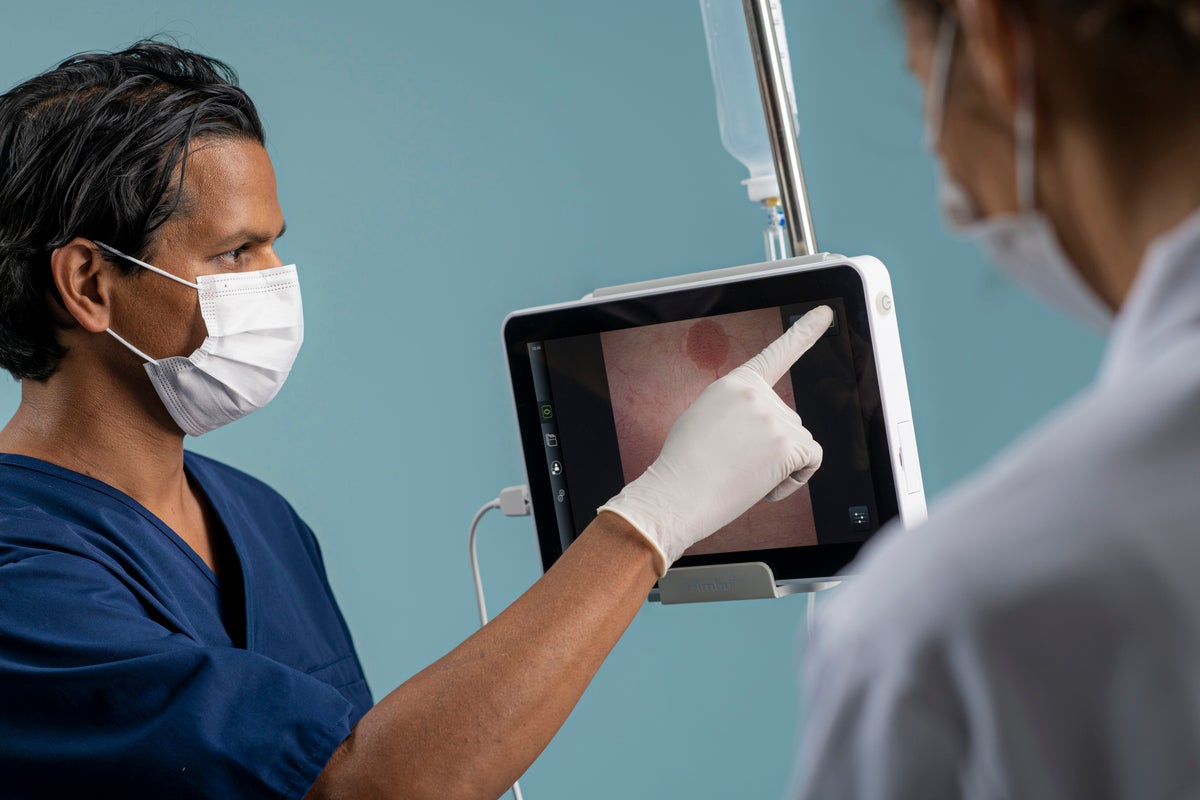The big hospital digitalisation challenge
THE ARTICLES ON THESE PAGES ARE PRODUCED BY BUSINESS REPORTER, WHICH TAKES SOLE RESPONSIBILITY FOR THE CONTENTS

Ambu is a Business Reporter client.
How smart endoscopy solutions are streamlining workflows and boosting patient outcomes.
Hospitals around the world are increasingly turning to digital as they wrestle with rising demands, strained resources and high staff turnover.
Management teams are racing to deploy new technology that reduces the strain, but they face massive logistical considerations to ensure systems integrate across vast hospital estates to streamline workflows, liberate clinical time and improve patient outcomes.
Demands on hospital services are soaring and, with the proportion of the world’s over-60 population rising from 12 per cent to 22 per cent between 2015 and 2020, the pressure will only intensify as more people live with multiple co-morbidities.
But going digital involves more than the flick of a few switches, and it can bring disruptive jeopardy across the procurement landscape if systems do not integrate, or cause delays and dysfunction.
“To excel in this pressured and fast-changing world, hospitals need to become more efficient, competitive, sustainable, and future-proof,” according to a report by Siemens. The report also highlights that implementing digital processes is a complex challenge.
The demand for endoscopic procedures has been rising across the last decade as hospitals, clinics and day units deal with increasing chronic conditions experienced by aging populations, with one report forecasting that the number of over-50s in the United States with at least one chronic disease will almost double to 142.66 million between 2020 and 2050.
Diagnostics is at the frontline of digital transformation in hospitals where technology must both meet increasing demands and synchronise across multiple platforms – uniting staff, data and devices to improve services and efficiencies.
“Endoscopy is one of the fastest-growing areas of medtech,” says Bassel Rifai, EVP, Chief Marketing Officer and President APAC & EMEA of single-use endoscopy specialist Ambu. “It represents a less invasive way to diagnose and treat patients, and it is well-suited to both drive and benefit from advances in digital healthcare.”
Hospitals are working hard to make the most of digital opportunities to become more efficient in terms of workflow and patient outcomes. A report in the Harvard Business Review states that “digital transformation has a substantial role to play in optimizing hospitals’ operational decision-making”, with benefits across patient flow, staffing, scheduling and supply chain management.
“We work closely with healthcare systems to understand their needs,” explains Rifai. “And what we’ve found is that a big barrier to digitalisation is that hospitals purchase a wide variety of diagnostic and treatment capital equipment. It’s often very expensive, and it often must last for seven to 10 years or even more. While that’s good for an equipment supplier to ‘lock in’ a customer, for the hospital system it makes it very difficult to be nimble, and to stay at the leading edge of digitalisation.
“A big focus of our company has been to overturn that paradigm – to instead offer hospitals a choice that has low capital investment, and a commitment to rapid innovation – both in terms of hardware, and perhaps even more importantly for the future, software and integration.”
In addition to the digitalisation benefits, research has demonstrated that single-use endoscopy has a positive benefit to efficiency, safety, energy use, staff satisfaction and sustainability.
Hospitals currently grapple with staff shortages, budget restraints and disconnected departments where equipment and information can get lost in transportation. The connectivity benefits of digital endoscopy solutions eliminate the choke-points and unite departments with easy, efficient workflows.
This is a vital component of a modern hospital’s ability to perform in harmony, rather than as a disjointed collection of services with impaired digital operability and burdened by the tasks of locating diagnostic devices and delivering them to wards or operating theatres, which eats into clinical time and raises staff frustrations.
Compact designs and space management are important factors in busy hospitals with complex environments where logistics play a vital role in workflow, staff efficiency and patient comfort.
The portability of Ambu endoscopy systems means that the use of single-use endoscopes can be extended around the hospital, enabling a range of departments to function optimally. This provides welcome extra capacity in under-pressure healthcare systems where high staff turnover and burnout are prime issues.
Ambu systems are designed to have everything in one place and the capability to record still images and video, which can be captured and sent to the archiving system. They are intuitive and come with little staff-training burden.
They are future-proof endoscopy systems which will continue to evolve as hospitals keep a sharp focus on digital transformation and its benefits. The use of single-use endoscopes and the supporting systems opens the benefits of digitisation to improve workflow and efficiencies that can radiate around entire hospitals.
Laura McWilliams, Supervisor Speech-Language Pathology at Mission Hospital, one of the US’s leading hospitals, adds: “In my role as a dysphagia diagnostician, providing care to patients in the ICU, a common obstacle is the limited availability of sterilised endoscopes. These patients are often in critical condition and can have disrupted metabolic functions, necessitating prompt and safe nutritional support while in the ICU.
“Being able to support patients to a speedy and secure return to eating and drinking is key, and compared to waiting for clean reusable endoscopes and transporting a reusable rack, the single-use option allows us to service our patients much faster.”
Endoscopy solutions with futureproof display and processing systems offer a range of tangible benefits for hospitals. They make it easier to cope with significant demand for efficiency, to leverage the benefits from advances in digital healthcare, and deliver results that help departments function and do what they do best – look after patients.
To find out more on how single-use endoscope solutions can benefit your hospital, please visit ambu.com.

Bookmark popover
Removed from bookmarks